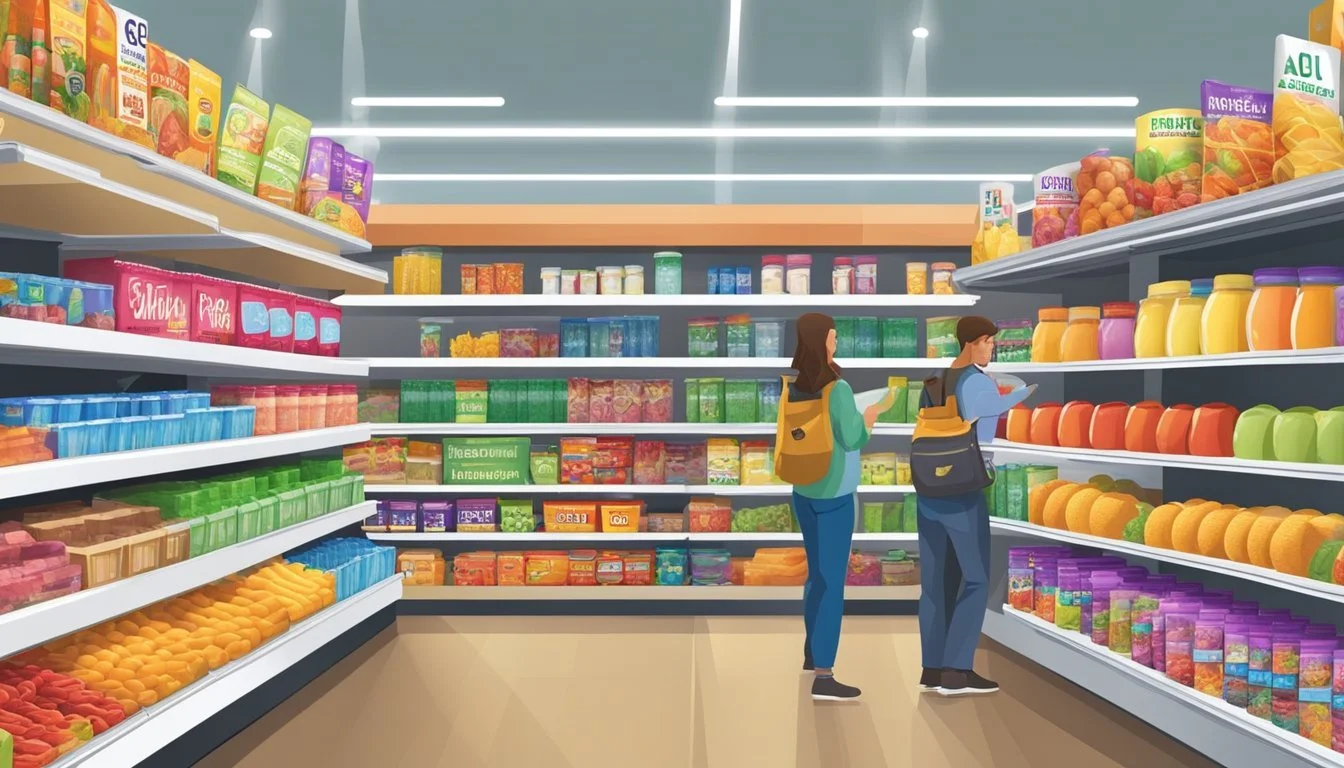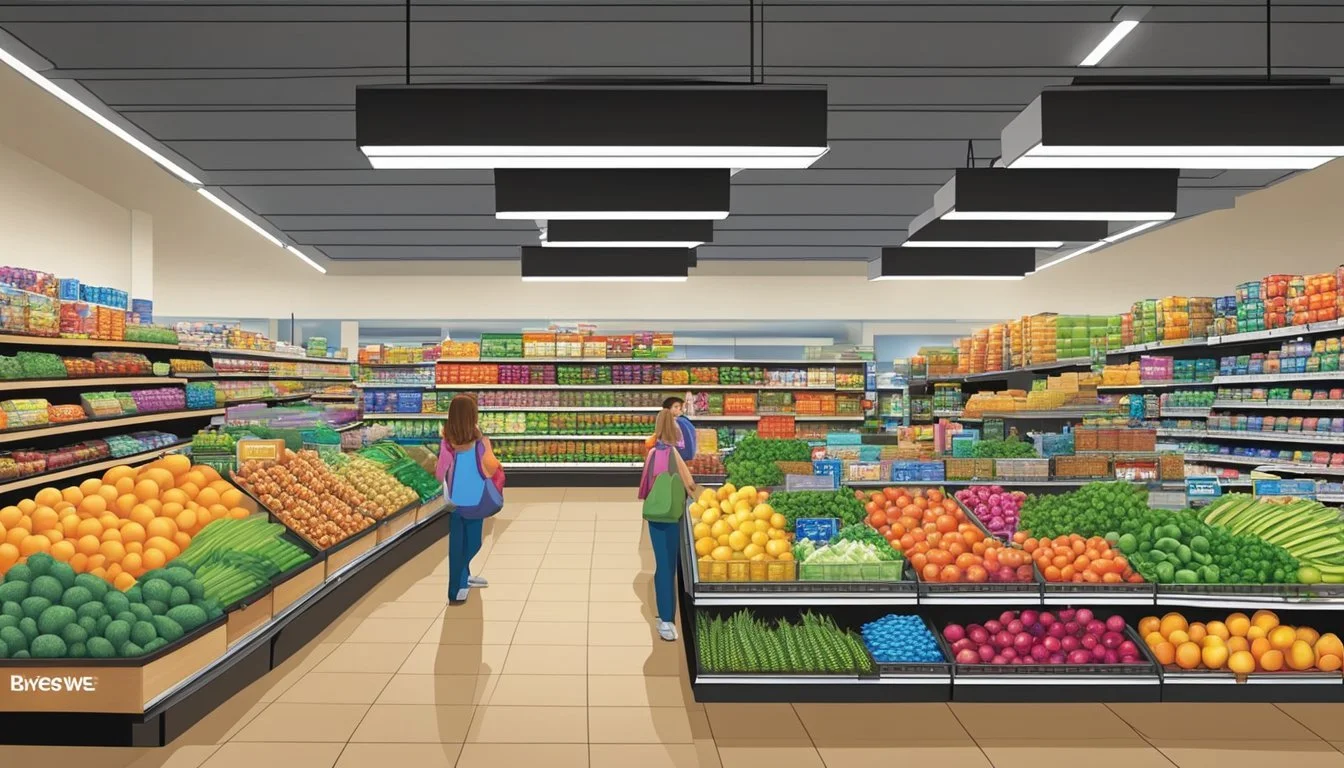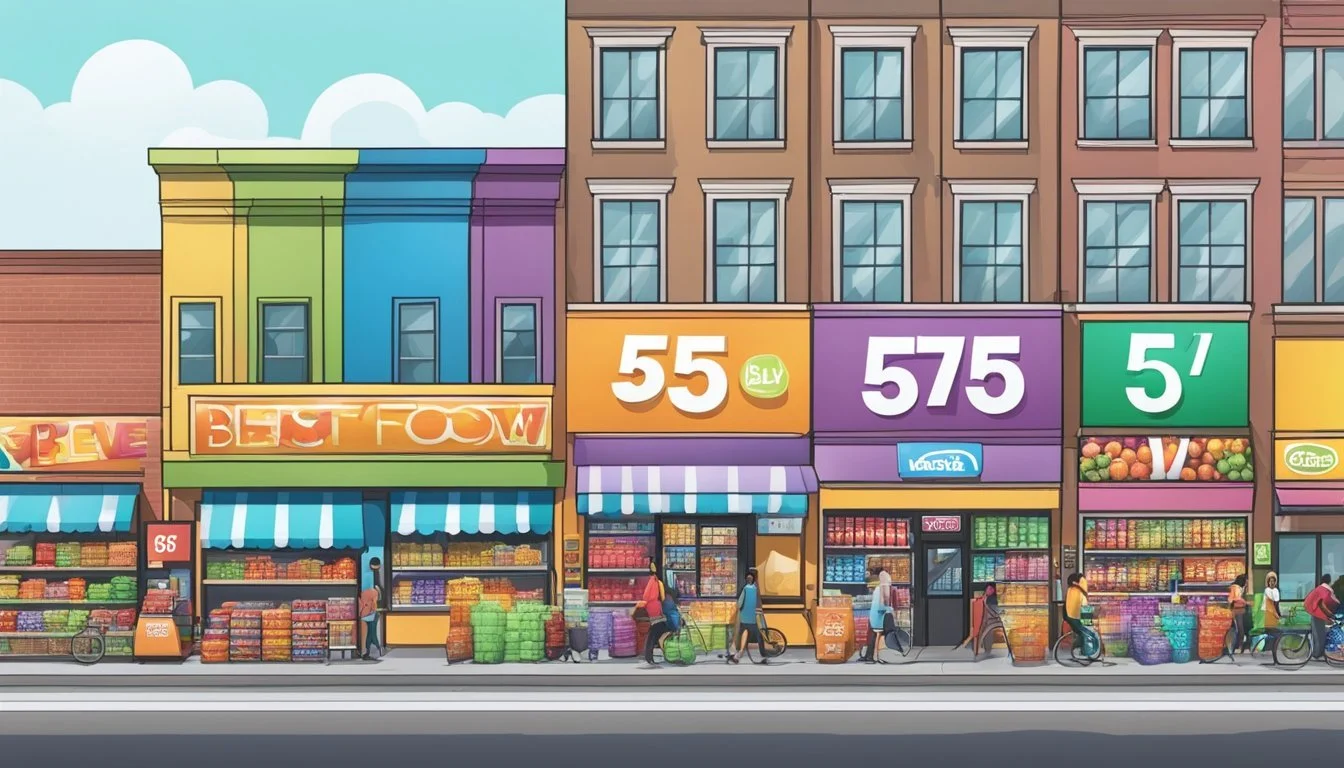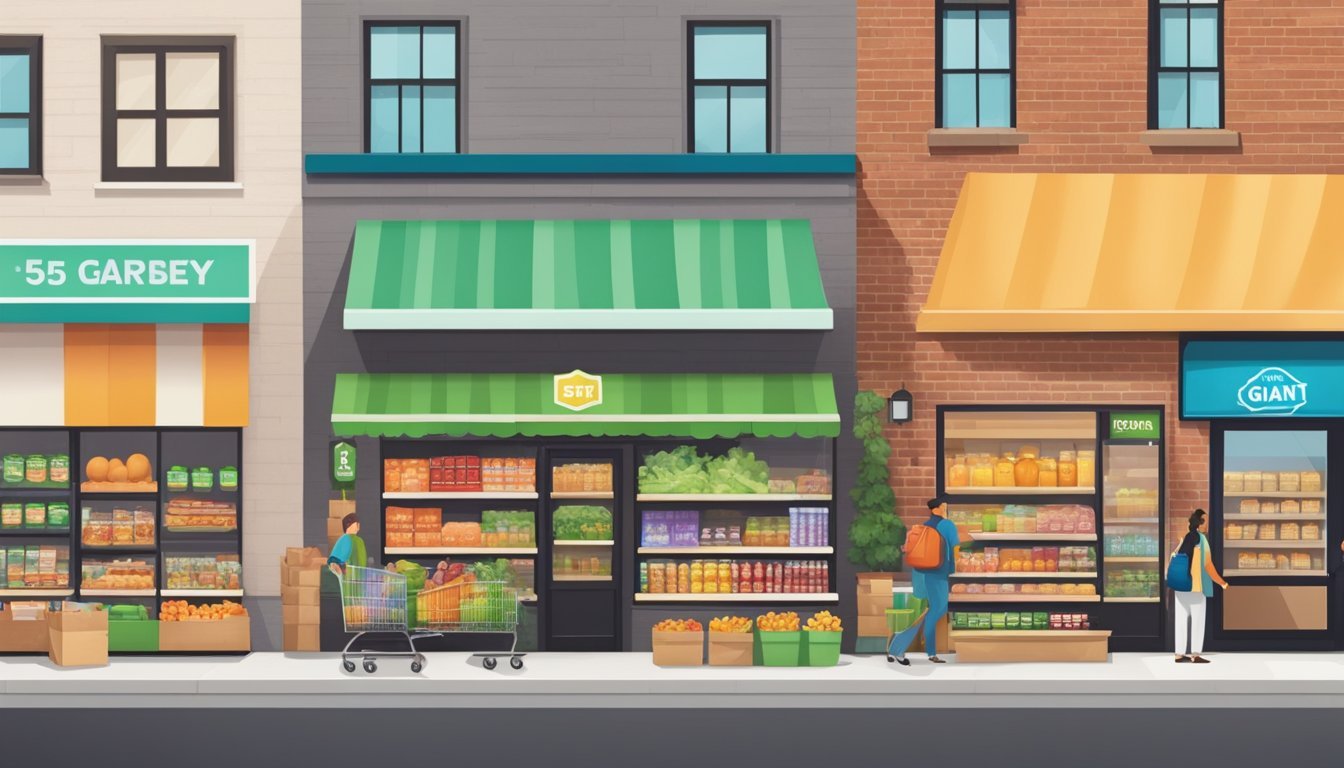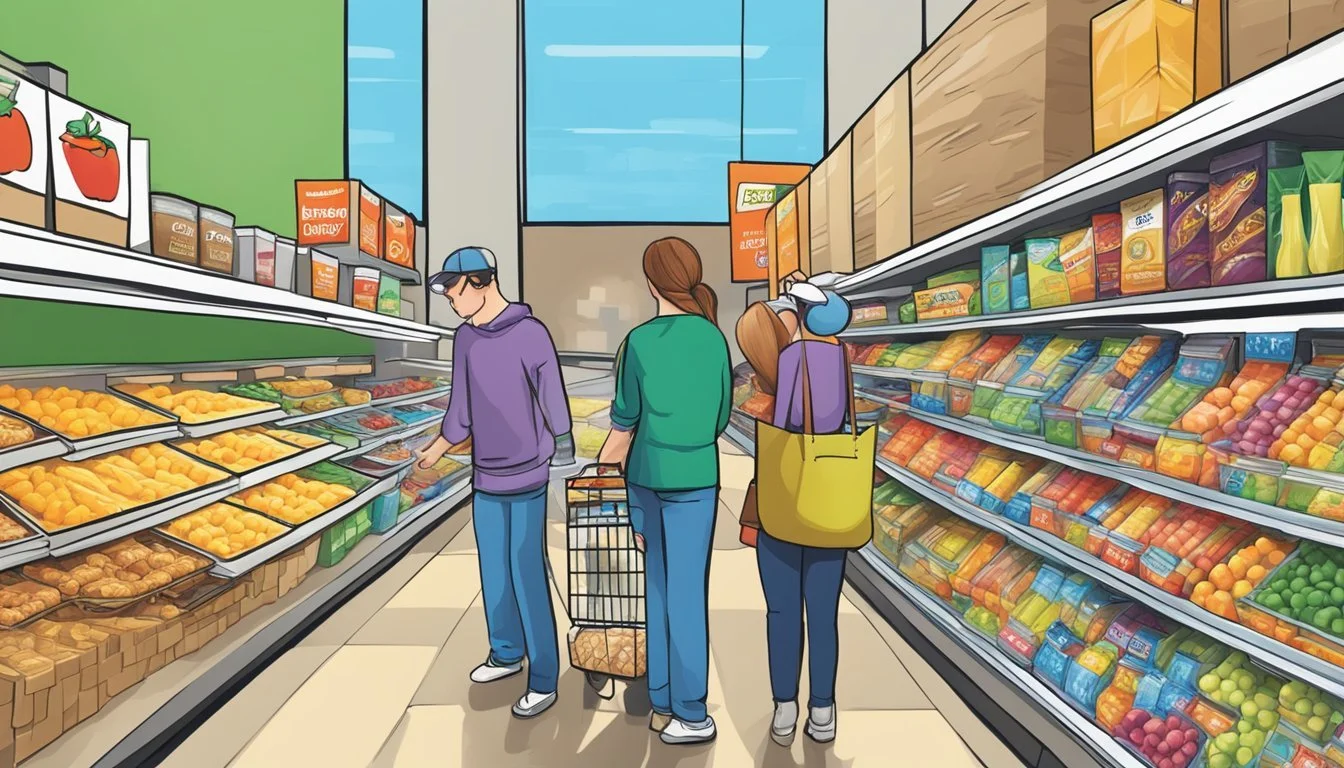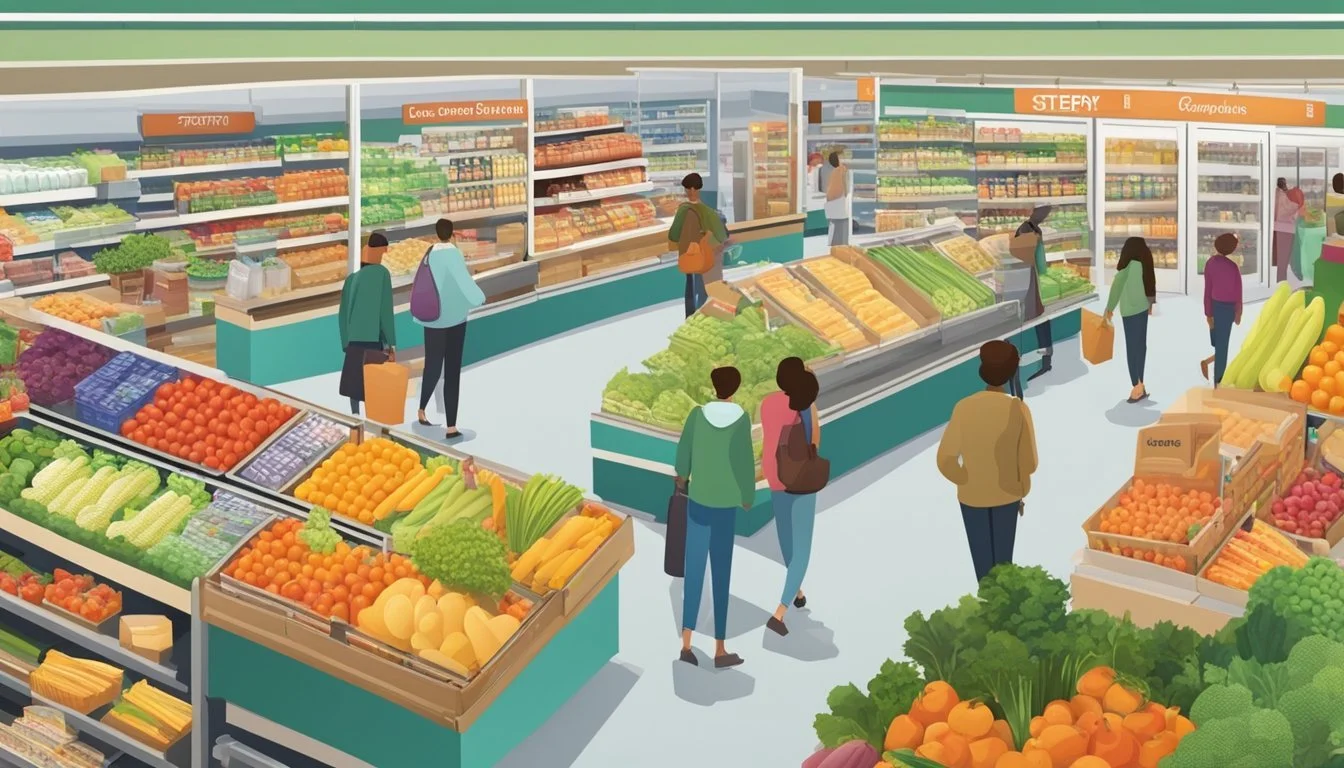Five Below vs Giant Food
A Comprehensive Comparison of Budget and Traditional Options
Five Below and Giant Food are two popular retail chains in the United States, but they cater to different shopping needs. Five Below specializes in offering a wide range of products priced at $5 or less, while Giant Food is a traditional grocery store chain.
For grocery shopping, Giant Food is the better option between the two, as it provides a full range of food items, fresh produce, and household essentials. Five Below, on the other hand, offers limited food options, primarily focusing on snacks, candy, and beverages.
Shoppers looking for affordable household items, seasonal decor, or inexpensive gifts might find Five Below appealing. However, those seeking to complete their weekly grocery shopping will find Giant Food more suitable, with its broader selection of fresh foods, meats, dairy products, and pantry staples.
Background on Five Below and Giant Food
Five Below and Giant Food are two distinct retail chains operating in the United States. Five Below focuses on value-priced merchandise, while Giant Food is a traditional supermarket chain. Both companies have unique histories and business models that have shaped their current market positions.
History of Five Below
Five Below was founded in 2002 by David Schlessinger and Tom Vellios in Philadelphia, Pennsylvania. The company's concept revolves around selling products priced at $5 or less, targeting the teen and pre-teen demographic. Five Below experienced rapid growth, expanding to over 1,000 stores across America by 2020.
The retailer offers a wide range of products, including toys, tech accessories, beauty items, and snacks. Five Below's success stems from its ability to provide trendy, affordable merchandise in a fun shopping environment. The company has adapted to market trends, introducing slightly higher-priced items in recent years while maintaining its core $5-and-below strategy.
History of Giant Food
Giant Food traces its roots back to 1923 when David Javitch opened a small meat market in Carlisle, Pennsylvania. In 1936, Javitch expanded his business by purchasing a store in Lewistown, Pennsylvania, which he named the Giant Shopping Food Center. This marked the beginning of Giant's transition into a full-service grocery store.
Over the decades, Giant Food grew into a major supermarket chain in the Mid-Atlantic region. The company now operates as The Giant Company, a name adopted in 2020 to reflect its evolving role in customers' lives. Giant Food has over 400 retail locations across five states, offering a wide range of groceries, household items, and pharmacy services.
Comparative Analysis of Product Offerings
Five Below and Giant Food offer distinct product ranges catering to different customer needs. Their offerings vary significantly in terms of fresh produce, store brands, and specialty items.
Availability of Fresh Produce
Giant Food excels in fresh produce offerings. The store provides a wide array of fruits and vegetables, including seasonal and local options. Shoppers can find both conventional and organic produce.
Five Below, as a discount retailer, does not typically stock fresh produce. Their focus lies on non-perishable snacks and packaged foods.
Giant Food's produce section often includes pre-cut fruits and vegetables for customer convenience. The store also offers a variety of herbs and specialty items like exotic fruits.
Quality and Range of Store Brands
Giant Food boasts an extensive range of store-brand products across various categories. These include their "Nature's Promise" organic line and "Taste of Inspirations" premium offerings.
Five Below carries limited store-brand items, primarily in snacks and beverages. Their focus is on name-brand products at discounted prices.
Giant Food's store brands often receive positive reviews for quality and value. They cover essentials like dairy, bread, and canned goods.
Five Below's store-brand items are typically budget-friendly alternatives to popular snacks and drinks.
Selection of Organic and Prepared Foods
Giant Food provides a robust selection of organic products. These span multiple departments, including produce, dairy, meats, and packaged goods.
The store also offers an array of prepared foods. Customers can find ready-to-eat meals, salad bars, and hot food stations.
Five Below's organic and prepared food options are limited. They may stock some organic snacks or health-focused packaged items.
Giant Food caters to diverse dietary needs with gluten-free, vegan, and other specialty prepared foods. Their deli often features rotisserie chickens and pre-made sandwiches.
Five Below occasionally offers frozen meals or microwaveable snacks, but their selection is not extensive or focused on health-conscious options.
Pricing and Value for Money
Five Below and Giant Food employ different pricing strategies to attract customers. Their approaches to discounts, staple items, and brand offerings impact overall value for shoppers.
Everyday Low Prices Comparison
Five Below maintains a consistent $5 or less price point for most items. This simplifies shopping and budgeting for customers. Giant Food uses a more traditional pricing model with varying costs across products.
Giant Food often has lower prices on fresh produce and meat compared to Five Below's limited grocery selection. However, Five Below excels in offering inexpensive household goods, party supplies, and seasonal items.
For packaged snacks and drinks, Five Below's $5 cap can lead to savings on certain brands. Giant Food's larger selection allows for more price comparisons and potential deals on bulk purchases.
Analysis of Savings and Discount Programs
Giant Food offers a robust loyalty program with personalized digital coupons and gas rewards. Members earn points on purchases, translating to fuel discounts or grocery savings. The store also provides weekly circular deals and senior discount days.
Five Below lacks a formal rewards program but runs periodic sales events. These include "Five Below Friday" deals and seasonal clearances. The store's everyday low pricing strategy reduces the need for extensive coupon programs.
Giant Food's app allows for easy coupon clipping and deal tracking. Five Below's simpler approach appeals to shoppers who prefer straightforward pricing without managing multiple offers.
Cost of Generic Staples versus Brand Names
Giant Food carries a wide range of generic and brand-name products. Their store brand offers savings on staples like milk, bread, and canned goods. Prices for these items are often 20-30% lower than national brands.
Five Below focuses more on branded items within their $5 price point. This can lead to savings on certain name-brand snacks or personal care items compared to full retail prices elsewhere.
For basic pantry staples, Giant Food typically offers better value due to their broader selection and competitive store brand pricing. Five Below's limited grocery options make it less suitable for comprehensive grocery shopping.
Customer Experience and Service Quality
Five Below and Giant Food offer distinct shopping experiences tailored to their target customers. The two retailers differ significantly in their checkout processes, customer service approaches, and store layouts.
Checkout Process and Efficiency
Five Below emphasizes quick transactions with self-checkout kiosks and mobile payment options. Lines tend to move swiftly, especially during non-peak hours. The store's limited inventory contributes to faster checkouts.
Giant Food provides both traditional and self-checkout lanes. Wait times can vary depending on store traffic. The supermarket's loyalty program integrates with checkout systems, allowing customers to easily redeem rewards and discounts.
Customer Service and Support
Five Below maintains a lean staff model, with fewer employees on the floor. Customer service is primarily available at checkout or through centralized help desks. The company focuses on a self-service shopping model.
Giant Food offers more comprehensive customer support. Dedicated service counters assist with returns, exchanges, and special orders. Staff members are typically available throughout the store to answer questions and provide product recommendations.
Store Layout and Shopping Convenience
Five Below features a simple, open layout with clearly marked sections. Products are organized by price point, making it easy for shoppers to find items within their budget. The compact store size allows for quick browsing.
Giant Food's larger format accommodates a wider product range. Aisles are organized by category, with clear signage. The store often includes specialty departments like bakeries and pharmacies, enhancing shopping convenience but potentially increasing navigation time for customers.
Store Accessibility and Locations
Five Below and Giant Food differ significantly in their store locations and accessibility. The two retailers have distinct strategies for their physical presence, impacting customer convenience and shopping experiences.
Density and Reach of Store Locations
Five Below operates over 1,000 stores across the United States, with a strong presence on the East Coast. The company targets strip malls and shopping centers in suburban areas, making their stores easily accessible to a wide customer base.
Giant Food concentrates its operations in the Mid-Atlantic region, with approximately 165 supermarkets. The chain focuses on larger, standalone locations in urban and suburban settings.
Five Below's higher store count provides more options for customers in their service areas. Giant Food's fewer locations are typically larger, offering a wider product range at each site.
Evaluating Regional Accessibility
Five Below's expansion strategy has led to a broader geographic reach, covering 40 states. This wide distribution increases accessibility for customers across diverse regions.
Giant Food maintains a more concentrated presence in Maryland, Virginia, Delaware, and Washington D.C. This regional focus allows the company to tailor its offerings to local preferences and needs.
Five Below's smaller store format enables placement in various locations, including town centers and strip malls. Giant Food's larger stores often require more spacious lots, potentially limiting options in densely populated urban areas.
Both retailers consider factors such as population density, traffic patterns, and competitor locations when choosing store sites to optimize customer access.
Target Demographics and Market Positioning
Five Below and Giant Food cater to distinct customer segments with different strategies. Their target demographics and market positions reflect their unique product offerings and pricing approaches.
Families and Budget Shoppers
Giant Food primarily attracts families and budget-conscious shoppers. The grocery chain focuses on providing a wide range of essential food items and household goods at competitive prices. Giant Food's larger store formats accommodate weekly family shopping trips, offering bulk purchases and family-sized products.
Giant Food's loyalty programs and sales promotions appeal to cost-sensitive customers looking to maximize their grocery budgets. The stores often feature kid-friendly layouts and family-oriented product selections, including school lunch items and family meal solutions.
Young Adults and Trend-Seekers
Five Below targets a younger demographic, particularly tweens, teens, and young adults. The discount retailer's product mix includes trendy accessories, tech gadgets, and novelty items priced at $5 or less.
Five Below's colorful, energetic store designs and frequently rotating inventory appeal to shoppers seeking affordable, fun purchases. The company capitalizes on social media trends and pop culture references to attract its target audience.
Young customers appreciate Five Below's low-risk price point for trying new products or impulse buys. The stores' layout encourages discovery shopping, with eye-catching displays of the latest fads and seasonal items.
Comparison of Additional Services
Five Below and Giant Food offer distinct services beyond their core retail offerings. These additional features can significantly impact the shopping experience and customer loyalty.
Grocery Delivery and Online Shopping
Giant Food provides comprehensive online shopping and delivery options. Customers can browse and purchase groceries through the Giant Food app or website, selecting home delivery or curbside pickup. The service offers same-day delivery in many areas.
Five Below, primarily focused on in-store experiences, has limited online shopping capabilities. While customers can browse and purchase items on their website, the company does not offer grocery delivery services due to its non-food focus.
Giant Food's delivery service integrates with Instacart, allowing customers to receive groceries within hours. They also offer a subscription service for frequent shoppers, reducing delivery fees.
Membership Benefits and Rewards
Giant Food operates a robust loyalty program called Giant Flexible Rewards. Members earn points on purchases, which can be redeemed for grocery discounts, gas savings, or free products. The program is free to join and offers personalized deals based on shopping habits.
Five Below does not have a traditional loyalty program. Instead, they focus on consistently low prices across their inventory. Occasionally, they offer email promotions and in-store specials.
Giant Food's program includes digital coupons, allowing members to clip and save offers directly to their account. They also provide exclusive member pricing on select items throughout the store.
Neither retailer charges an annual fee for their basic membership or rewards programs, making them accessible to all shoppers.
Reputation and Consumer Ratings
Five Below and Giant Food have distinct reputations among consumers. Their ratings reflect different strengths and weaknesses in areas like price, quality, and customer service.
Analysis of Surveyed Customer Opinions
Five Below receives praise for its affordable prices and diverse product selection. Customers appreciate the store's fun atmosphere and ability to find unique items. However, some surveys indicate concerns about product quality and durability. Giant Food earns positive feedback for its fresh produce and wide grocery selection. Shoppers value the chain's loyalty programs and digital coupons. Critics point to occasionally higher prices compared to discount competitors.
Evaluating Industry Ratings and Reports
Consumer Reports ranks Giant Food higher than Five Below in overall satisfaction. The grocery chain scores well in cleanliness and store layout categories. Five Below falls short in some industry studies focused on customer service metrics. However, the discount retailer excels in value-based ratings tables. A recent study found Five Below outperforming competitors in the dollar store segment. Researchers note Giant Food's strong performance in food safety and product freshness evaluations.
Looking Ahead: Prospects and Predictions
The grocery industry faces significant changes in the coming years. Both Five Below and Giant Food will need to adapt to shifting consumer preferences and technological advancements to remain competitive.
Future Trend Predictions for Grocery Shopping
Online grocery shopping will continue to grow rapidly. Sales of CPG products purchased online are increasing at nearly 5 times the rate of in-store sales. Food presents the most opportunity for online sales growth.
Omnichannel strategies will become crucial. Retailers will focus on seamlessly integrating online and in-store experiences. This may include expanded curbside pickup options and improved mobile apps.
Value-focused retailing will remain important. As economic uncertainties persist, shoppers will seek affordable options. Discount chains like Five Below may benefit from this trend.
Personalization will play a larger role. Grocers will leverage data to offer tailored promotions and product recommendations to individual customers.
Innovation and Adaptation Strategies
Automated technologies will reshape store operations. Self-checkout kiosks, electronic shelf labels, and inventory robots may become more common in supermarkets like Giant Food.
Sustainability initiatives will gain prominence. Grocers may invest in energy-efficient refrigeration, reduce packaging waste, and expand local sourcing programs.
Expanded prepared food offerings could drive growth. Supermarkets may enhance their grab-and-go meal selections to compete with restaurants and meal delivery services.
Data analytics will inform decision-making. Retailers will use advanced analytics to optimize pricing, assortment planning, and supply chain management.

